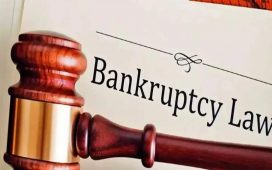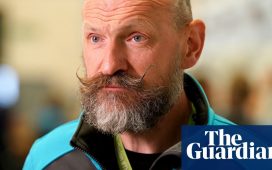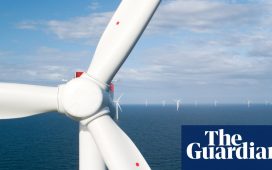The main news in Rolls-Royce’s half-year numbers was obviously further proof that the engine-maker and defence group, which was virtually bust during the Covid pandemic, is now in soaraway financial form.
Dividends are coming back; the chief executive, Tufan Erginbilgiç, increased forecasts for profits and cash generation; and the shares went on another tear. Congratulations if you caught the bottom at 40p, around the time of the 2020 rescue rights issue – the price is now 481p, up 7% on Thursday. It is the most astonishing turnaround at a major FTSE 100 company in decades.
What does Rolls-Royce do for its next trick? Well, the next big thing would be re-entry into engines for narrow-body civil aeroplanes. At the moment, the Derby factory produces 200-odd engines a year for wide-body aircraft, but the narrow-body market is much larger and Rolls-Royce hasn’t been in it since its cash-strapped days of 2011. Work is currently concentrated on proving its next-generation UltraFan engine can be scaled down to power smaller aircraft. If it can be – and if the orders flow – there is an enormous new market into the 2030s.
Then there’s small modular reactors (SMRs), the cut-down versions of a nuclear power plant that advocates argue offer better economies than behemoths such as Hinkley Point C in Somerset. SMRs have been talked about as the coming nuclear technology for years without anybody being wholly convinced they will actually happen. But we may soon be at a point where Rolls-Royce receives an actual order from the UK government.
Ed Miliband, the energy secretary, has pledged “absolute support” for SMRs and, since Rolls-Royce’s version is the most advanced through the multi-year safety and technical assessments, it would be amazing if its design was not chosen as one to take forward. There should be an order by the end of the year, although the earliest a site could be up and running would be 2031.
But an order would be a critical moment, if Erginbilgiç is correct in saying that other European countries are watching the actions of UK authorities for reassurance. Sweden has already shortlisted Rolls-Royce to potentially deploy a fleet of SMRs, and the hope is that there might be a flood of interest if and when the UK commits.
Erginbilgiç has an interest, of course, in arguing that the UK should not squander its “first mover advantage” in SMRs, but his argument sounds broadly correct. There is a chance for the UK to build the supply chain and manufacturing base in a way that never happened with the development of offshore wind. Each SMR, with a generating capacity of 470MW, might cost £2.5bn, which adds up to a large sum if it is conceivable that hundreds of the plants may eventually be dotted around the world in pursuit of decarbonisation.
after newsletter promotion
Little of the long-term stuff is captured in City analysts’ projections for Rolls-Royce’s future, for understandable reasons. Both narrow-body engines and SMRs are purely entries in the cost line at the moment; it is also too soon to expect detail on funding and the necessary outside partnerships. Thus the stock market continues to hang on every word of Erginbilgiç ’s lengthy analyses of the productivity efficiencies for the business as it is today.
But one can also catch a glimpse of how, if the stars align (a critical qualification), Rolls-Royce’s astonishing recovery can become a long-haul affair.










